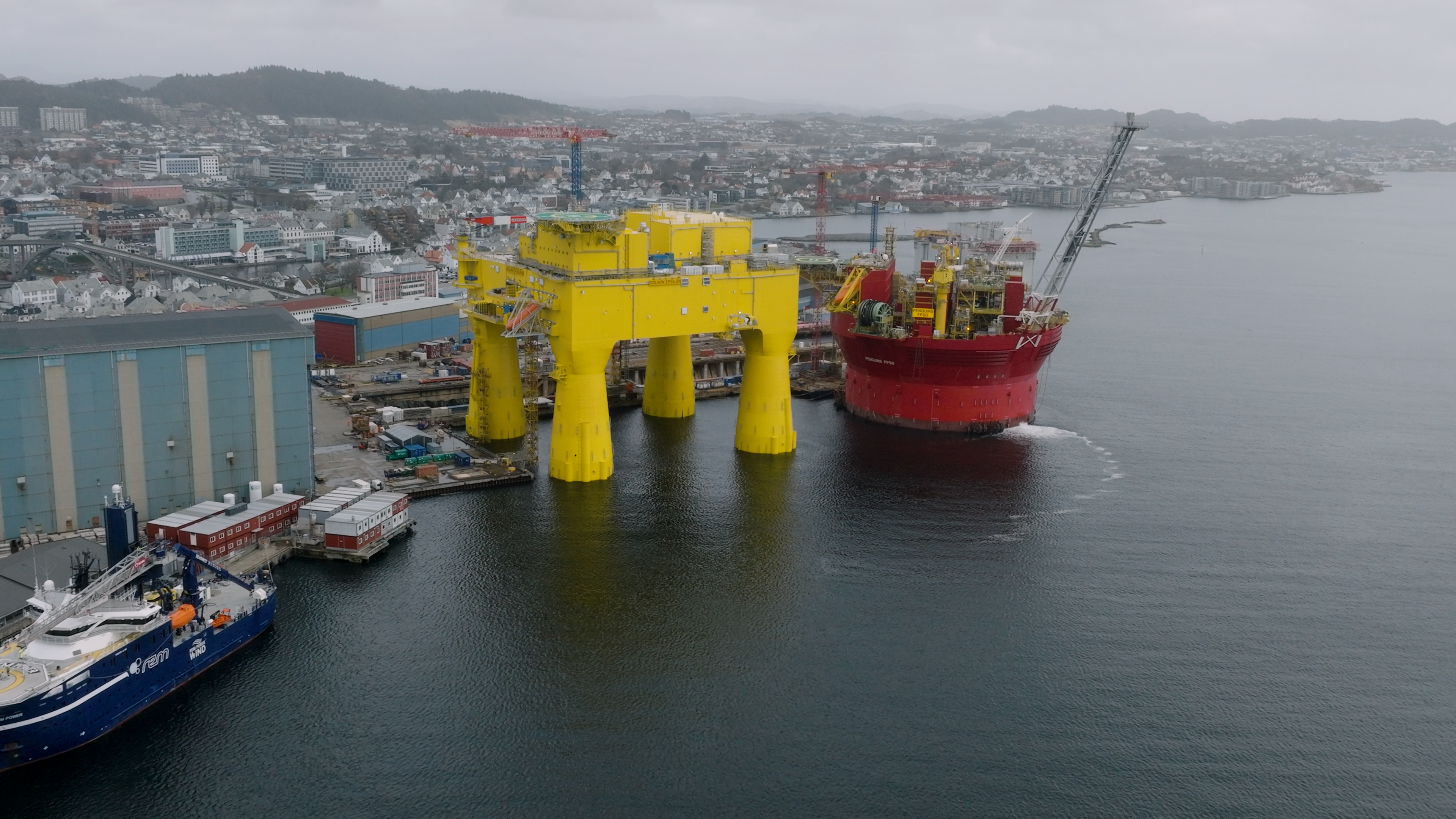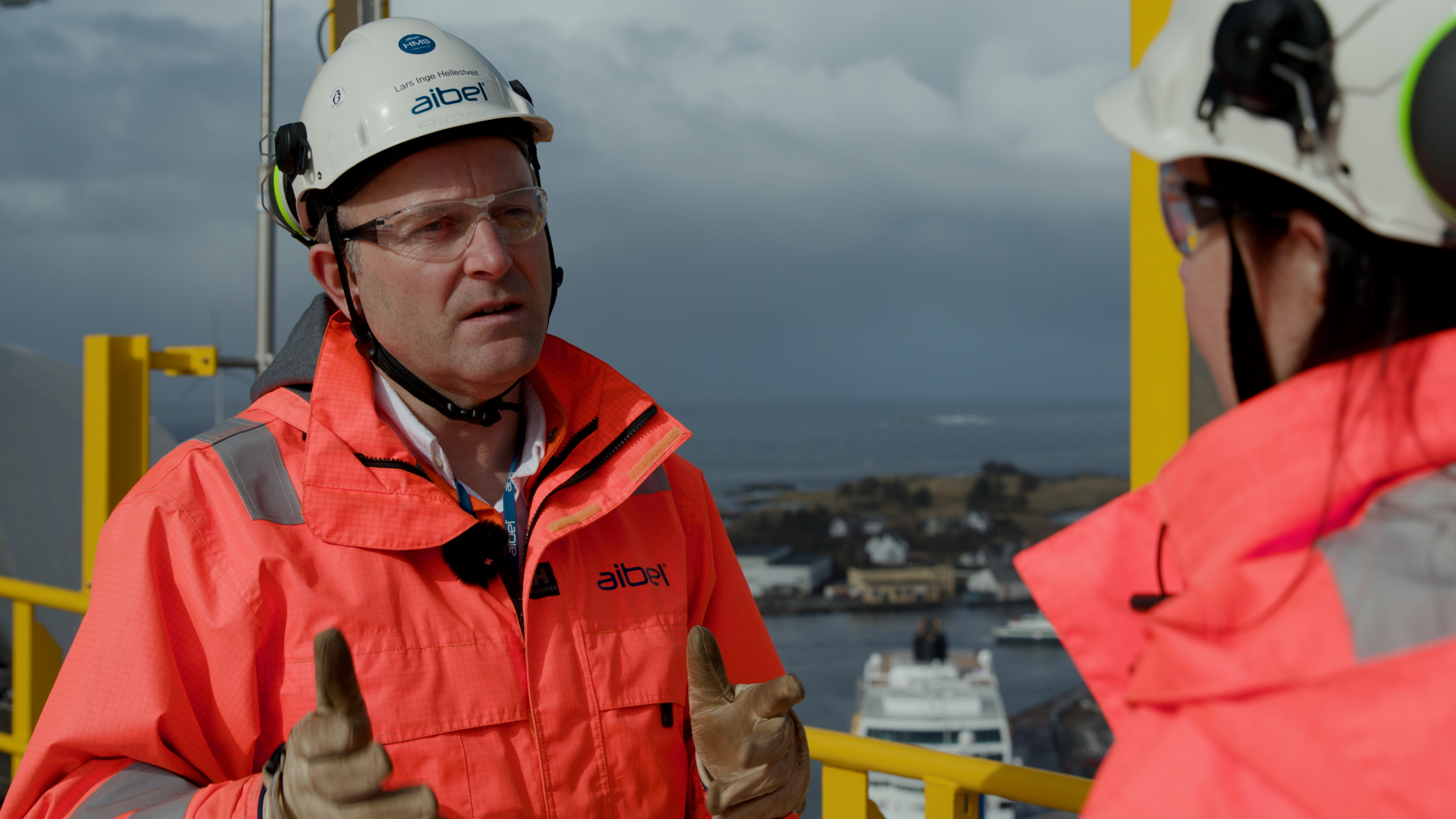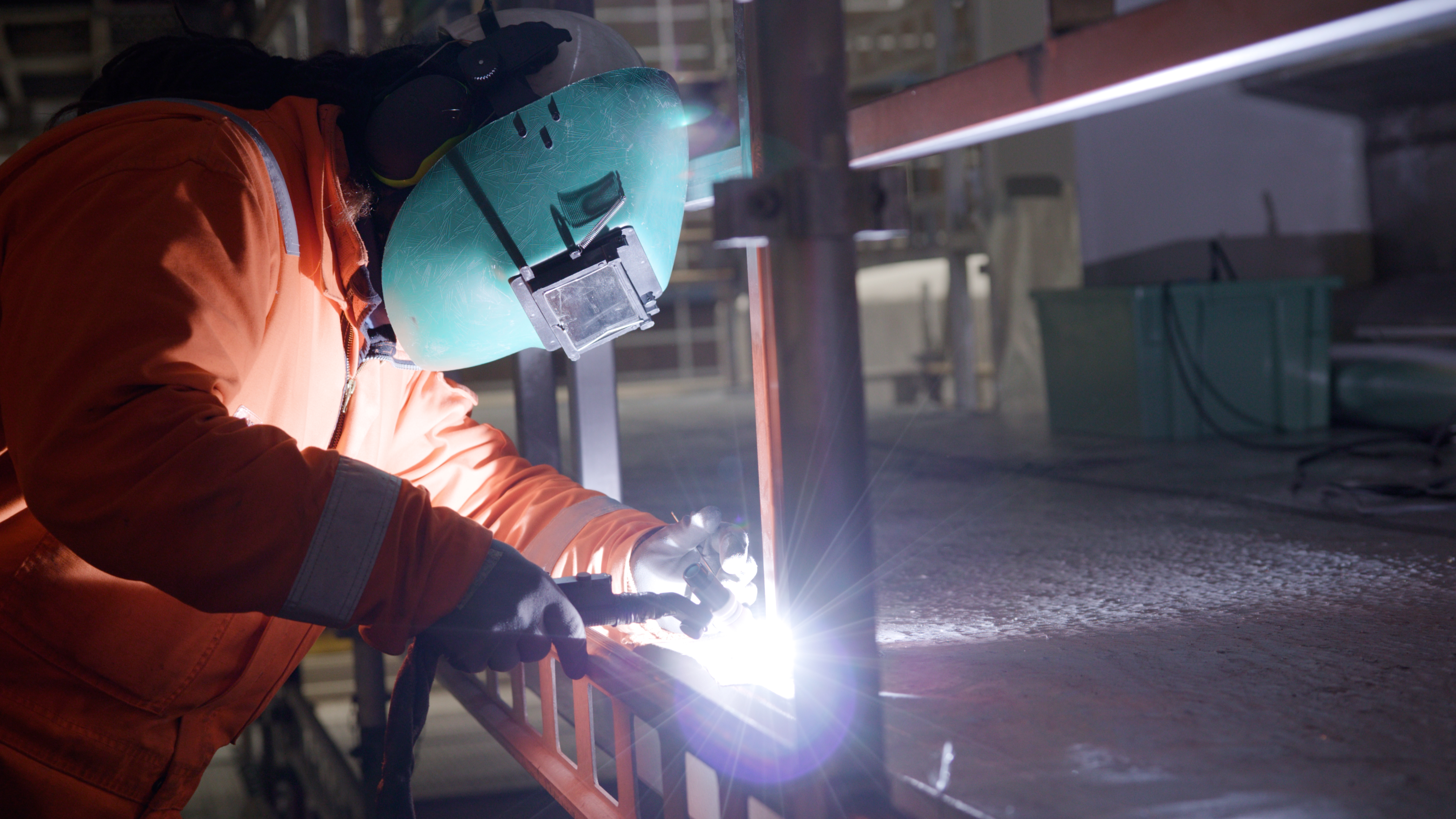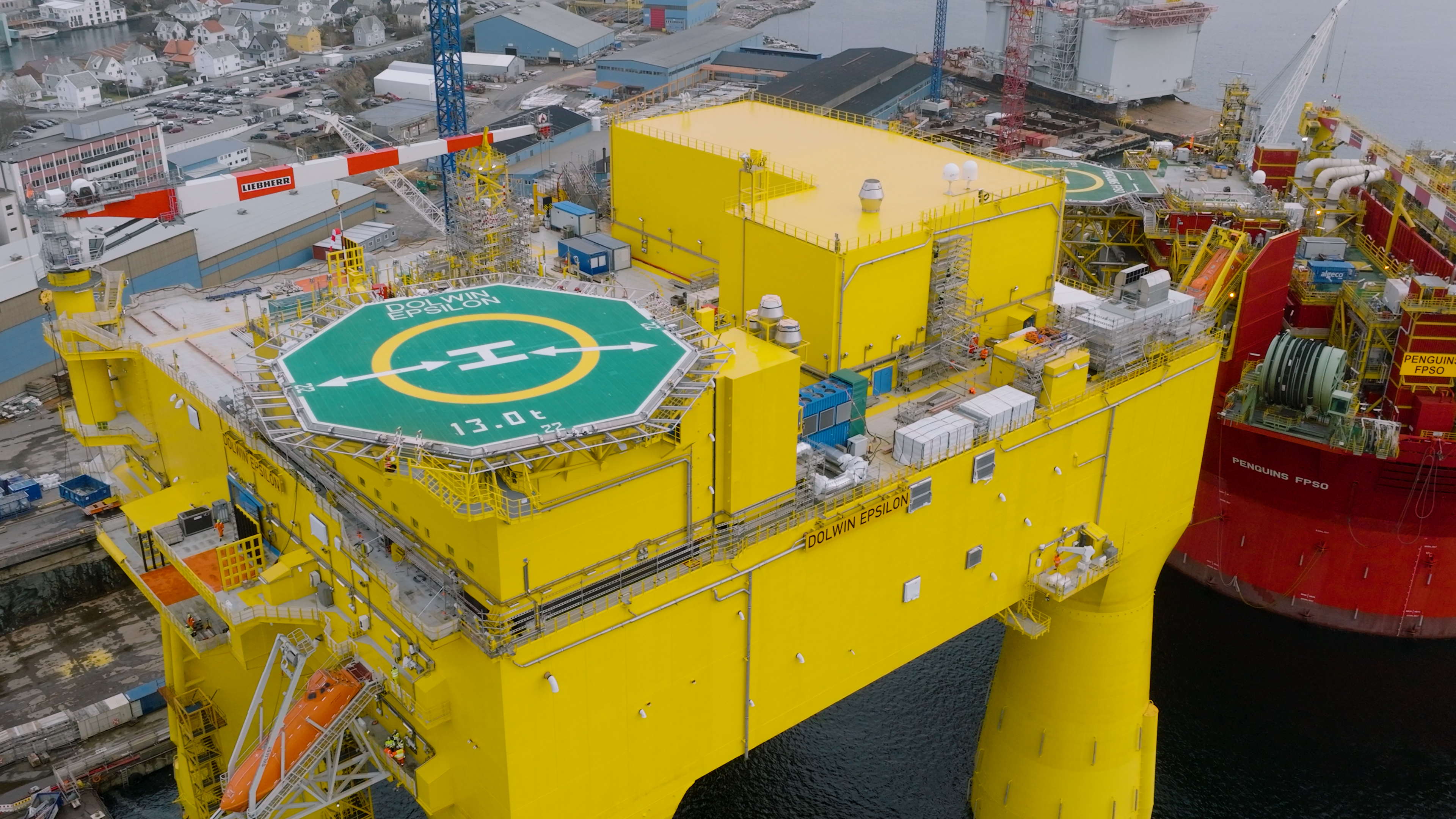Side by side
 Photo: Morten Gjerstad/Havtil
Photo: Morten Gjerstad/Havtil
- Offshore wind
Newbuilds lining the quay include the Dogger Bank B and DolWin Epsilon facilities for effective transfer of wind power to land, and Penguin’s floating production, storage and offloading (FPSO) unit for traditional petroleum output from the UK continental shelf.
The yard’s giant North Sea shop is also a hive of activity, producing modules for electrifying Oseberg and a unit intended to expand gas exports from the same Norwegian North Sea field to Europe.
Also under construction is the Irpa facility for boosting gas exports through a tie-in to Norway’s Aasta Hansteen field, while work began recently on the unmanned Munin process platform for installation on the Yggdrasil field.
Watch video
Why are we writing about offshore wind?
Regulatory responsibility for offshore wind power was delegated to the Norwegian Ocean Industry Authority in 2020. This authorises us to develop regulations for and conduct supervision of the development and operation of offshore wind farms.
A new set of regulations for renewable energy production offshore is underway.
Long experience
The yard on the Smeda Sound has 140 years of experience from building fishing boats, tankers, offshore facilities and now offshore wind installations.
“Lessons from the oil and gas industry which we’re taking with us to offshore wind largely involve transferring expertise in a flexible way,” says Lars Inge Hellestveit, Aibel’s vice president for yard operations in Haugesund.
“The crucial point is that by and large the same people work across these sectors. At the core is the oil and gas expertise we’ve built up over time, and which we’re taking with us into the renewables industry.”
However, he also sees that experience and solutions from offshore wind move in the other direction, being adopted in turn by the petroleum sector. That applies particularly to experience with unmanned facilities.
“There’s mutual learning and experience transfer between these industries, and exchanging expertise in both directions will become increasingly important over time,” he emphasises.

Many similarities
The DolWin Epsilon transformer platform dominates the quay – a bright yellow giant 80 metres long, which is visible from large parts of Haugesund and virtually indistinguishable from a traditional offshore facility.
Although it features a helideck, living quarters and freefall lifeboats, however, it lacks both a derrick and processing equipment – marking it out as a member of the renewables family.
Hellestveit confirms that many parallels exist between the oil and gas industry and renewable offshore wind. “In technical terms, the structures and designs are very similar.
“These involve big installations intended to stand in the sea for 25-50 years, whether they’re fixed or floating, while the same principles for calculating strength and conducting marine operations apply.
“Similarities are also found in such areas as electrical and cooling systems. Process requirements are admittedly more extensive on petroleum facilities, but you otherwise face many of the same technical challenges.”
He emphasises that safety requirements are identical, too. “The safety systems you find in the oil and gas sector also apply to offshore wind.”

AC/DC
When DolWin Epsilon becomes operational in Germany’s North Sea sector with a capacity of 900 megawatts, it will be converting electricity generated by 50 wind turbines from alternating current (AC) to direct current (DC).
That allows power to be transmitted over long distances with a minimum loss of energy. Once it reaches land, the electricity will be turned back into AC for transmission over the grid to about a million households on the continent.
Big industry
Hellestveit is convinced that offshore wind will become a big industry for Norway, although converting to this activity may take time. “And it’s clear that we’ve faced – and are facing – steep learning curves.
“We’re seeing the same pattern now as when we moved from shipbuilding to the petroleum business in the 1980s. That process took 10-20 years for us to reach a competitive level in the new sector.
“Where offshore wind’s concerned, we began to position ourselves as far back as 14 years ago. We’re now seeing the results, with a 50-50 split between traditional oil and gas activities and the renewables business.”
He also envisages having even more ocean-industry legs to stand on in the time to come. Aibel is currently conducting front-end studies related to fish farming in the open sea, for example. Because this historic yard has faith in the future.
“The sea has always been the source of our livelihood, so new opportunities are certain to arise,” says Hellestveit.
